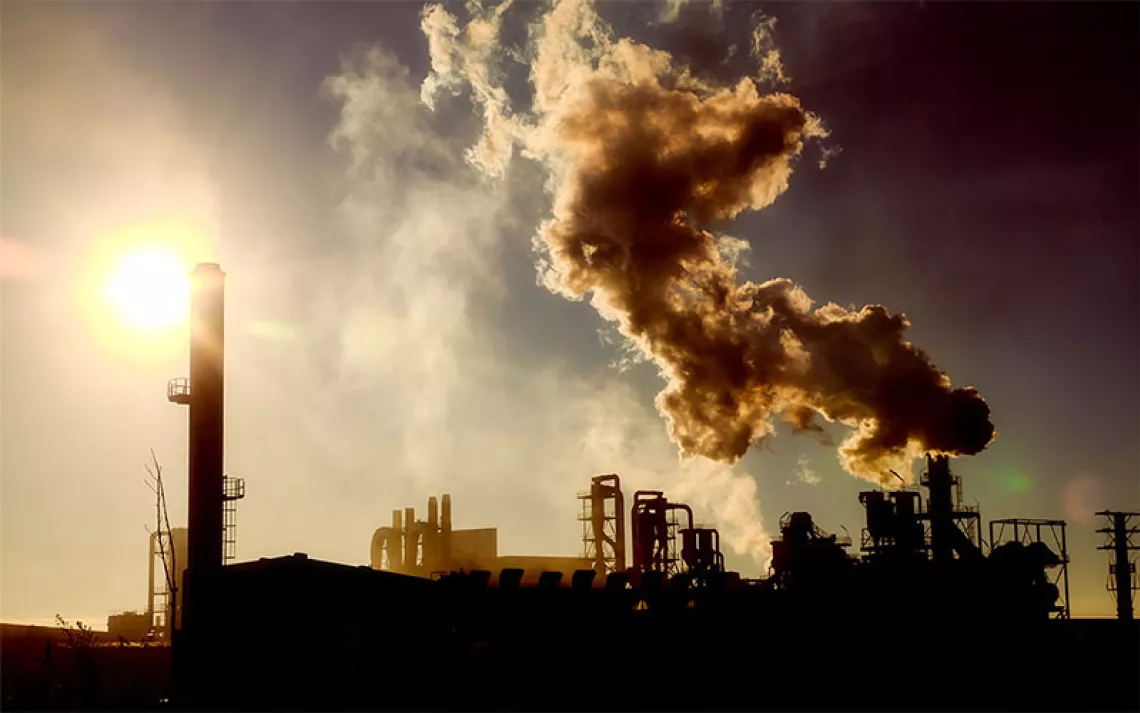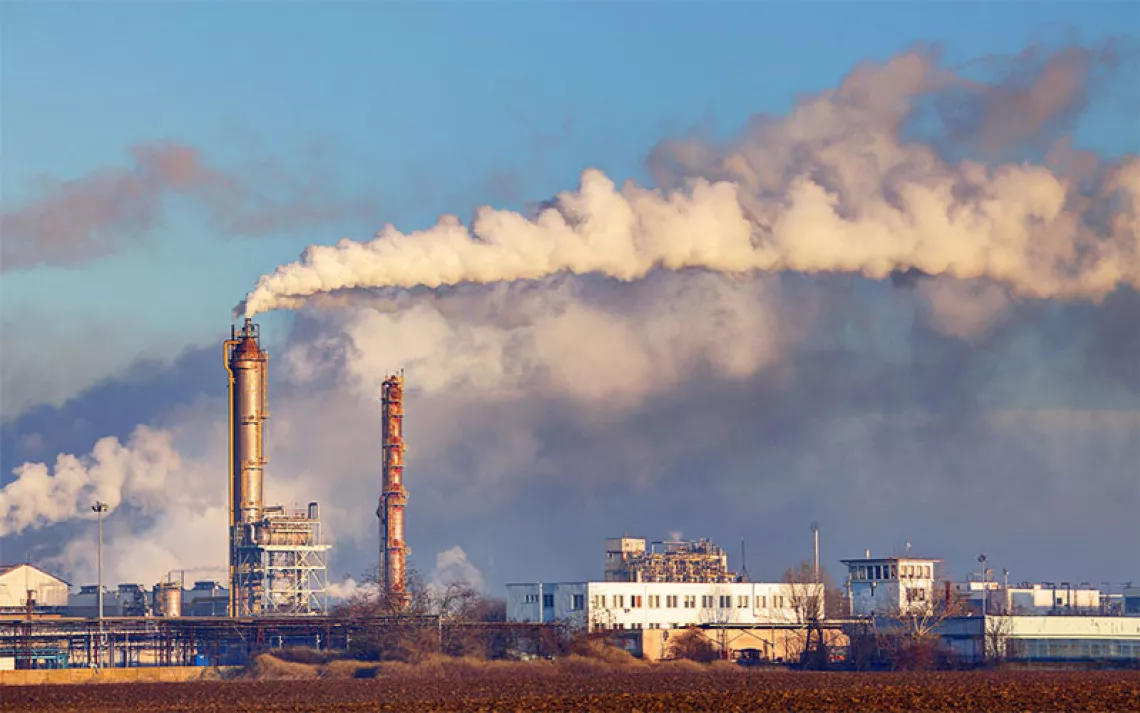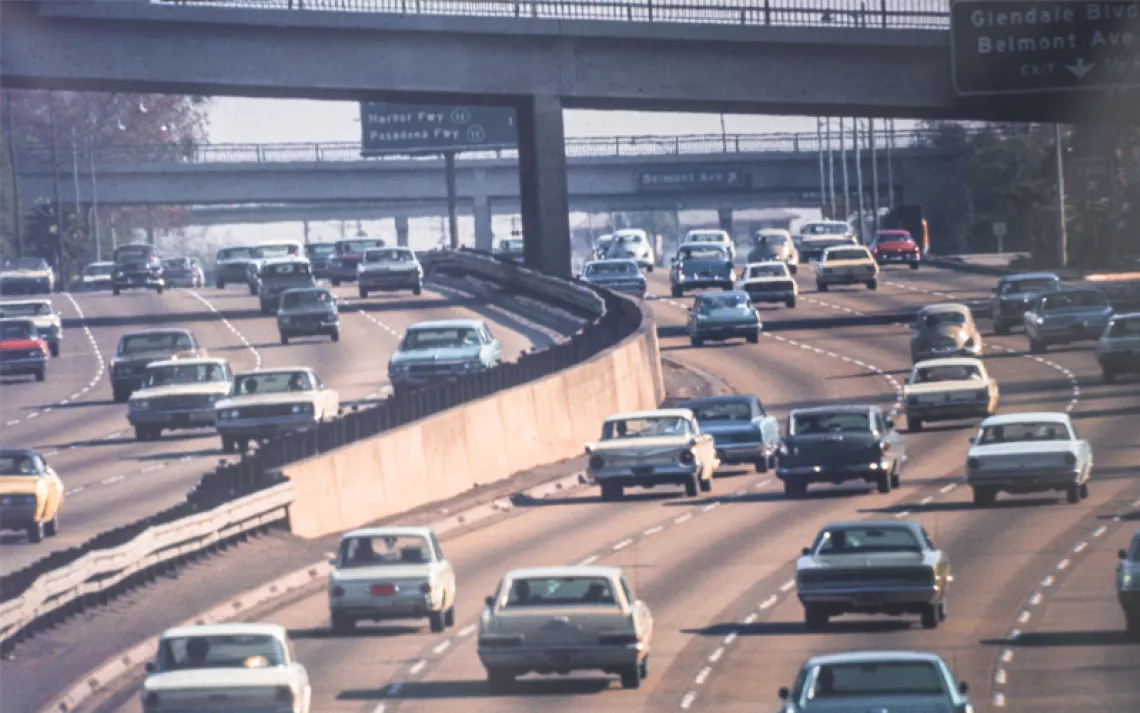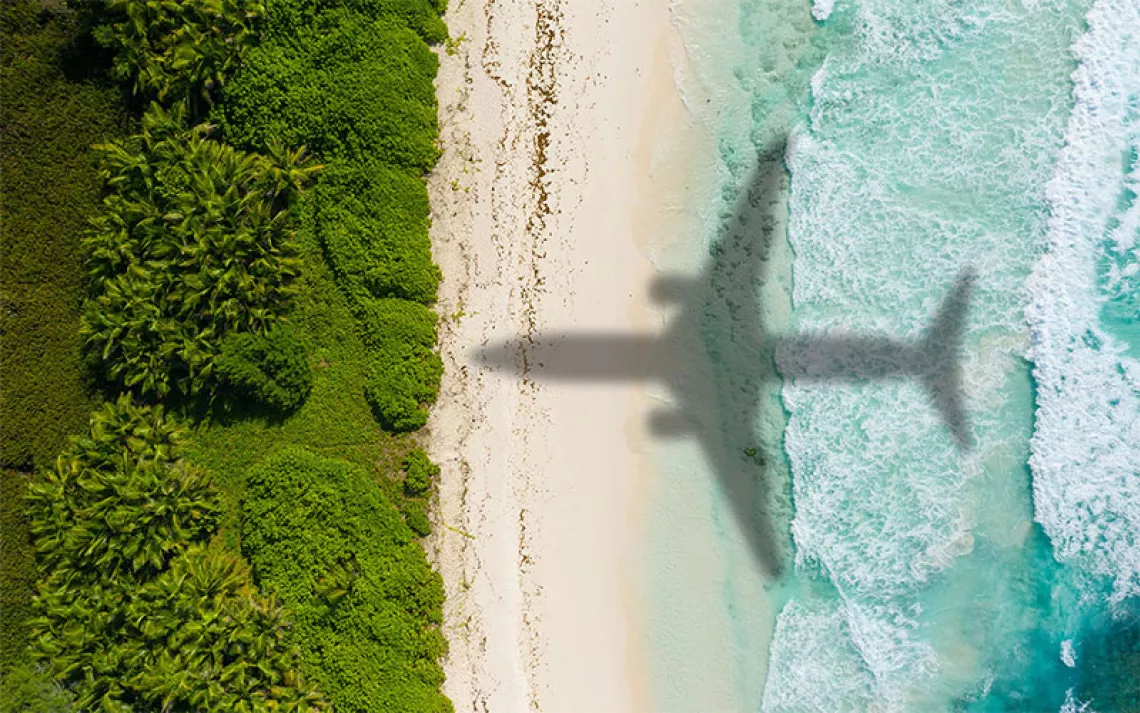Nearly Half of the US Population Is Breathing Dirty Air
Pollution makes millions more susceptible to health impacts, including COVID-19
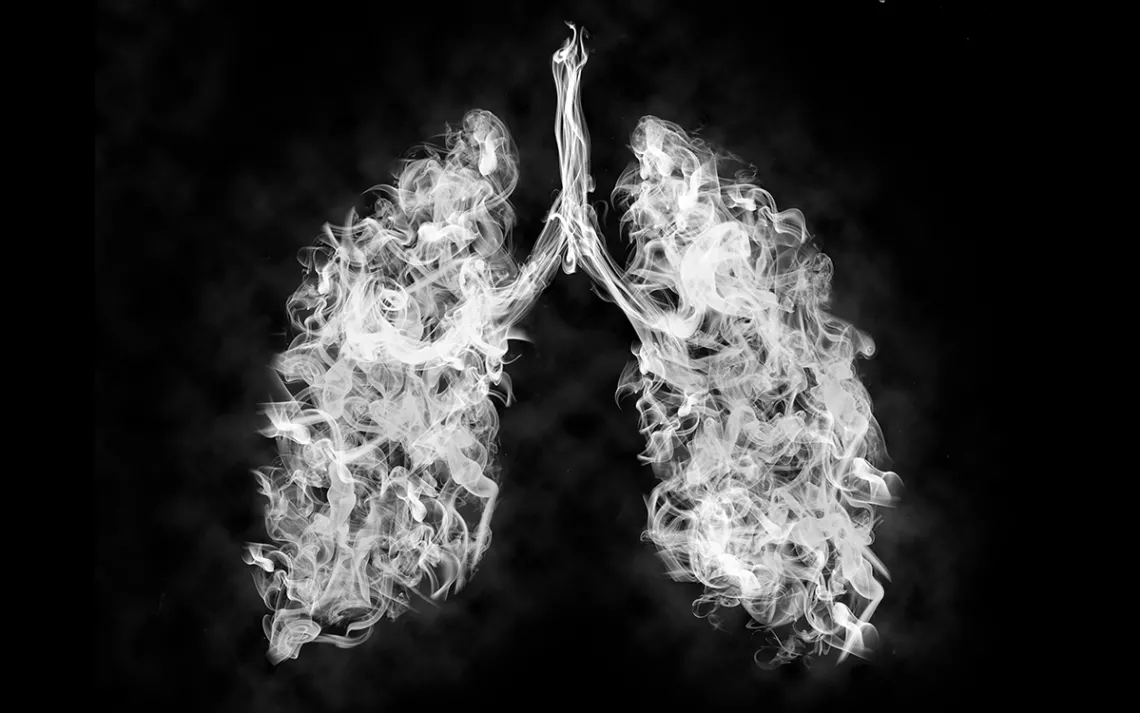
Illustration by Pascal Kiszon/iStock
As millions of Americans seek protection from the coronavirus through masks, bandanas, and other face coverings, the pandemic has put into stark relief one aspect of daily life we cannot live without: clean air.
Yet COVID-19 is not the only airborne-related health crisis facing communities nationwide. Nearly half of the entire US population breathes dirty air, according to the 21st-annual edition of the American Lung Association’s (ALA) State of the Air report, released today—and that number is only sure to rise should climate change, and the Trump administration’s campaign to undo clean air protections, go unchecked.
For its analysis, the ALA examined data collected by federal, state, and local and tribal governments from 2016 to 2018—three years ranked among the hottest ever recorded due to global warming. For that period, the report found that 150 million Americans—nearly five in 10 people, or 45 percent of the population—live in counties with unhealthy levels of particle or ozone pollution. Of that number, over 20 million people live in counties that failed all three measures of the ALA study: ozone and short-term and year-round particle pollution (PM).
“We attribute that to two factors: climate change, with hotter temperatures leading to drought and wildfire, and the Trump administration’s efforts to roll back some environmental regulations and a lack of enforcement of others,” Paul Billings, the national senior vice president for public policy at the American Lung Association, told Sierra. “In this year’s report, we’re starting to see some of the impact of that lack of enforcement coupled with climate change, leading to these increases overall.”
Cities, especially those in the western states, saw some of the biggest spikes in short-term and daily particle pollution. Of the top 25 cities ranked most polluted in the report, nine registered the highest number of days with spikes in particle levels: Fairbanks, Alaska; Yakima, Washington; Redding, California; Phoenix, Arizona; Spokane, Washington; Chico, California; Salinas, California; Santa Barbara, California; and Las Vegas, Nevada. The report attributes those spikes to wildfires fueled by global warming.
Particle pollution is linked to a wide range of health effects, but of greatest concern is premature death. Other impacts include coughing, wheezing, and shortness of breath in healthy adults as well as lung cancer, heart attacks, stroke, and dementia and adverse neurological disease. People with low incomes, seniors, children under 18, and communities of color are disproportionately impacted by dirty air.
A number of studies over the past two decades have also shown that exposure to particle pollution or ozone can increase susceptibility to respiratory infections. It turns out that includes COVID-19. A study out of Harvard released earlier this month linked elevated levels of PM with an increase in COVID-19 mortality. People exposed on an annual basis to one additional microgram per cubic meter of pollution, according to the Harvard report, have a 15 percent higher rate of death from complications of COVID-19—a troubling conclusion considering ALA’s finding that millions are exposed to high levels of particle pollution every day.
The report paints a particularly grim picture for populations in western states. The cities that ranked in the top 10 of the 25 most-ozone-polluted cities in the nation are all from the West, with seven of those located in California alone. Los Angeles, with its matrix of highways and endemic car culture, long the number one most polluted city for ozone according to State of the Air, remained at the top of the list. Fresno took the number one spot as the most polluted city for short-term particle levels. Fifteen of the 26 cities most polluted by annual particles are in the western United States.
The report also made clear that air pollution has no borders or boundaries: Emissions from Chicago, for example, move across Lake Michigan to pollute the skies in Sheboygan, Wisconsin.
Ozone, commonly known as smog, is created when a combination of tailpipe, power plant, and other emissions bake in sunlight and heat. Higher temperatures from global warming create conditions where more smog is formed, leading to more high ozone days, which leads to more adverse health consequences.
“For particle pollution, western communities are on the front lines of the impacts on climate change,” Billings said. “The hot, dry conditions have led to drought and wildfire. That’s why we’re seeing so much of this impact there.” The nature of California’s topography makes it particularly vulnerable: the mountains, basins, sunshine and heat, as well as where the ocean holds pollution. As a result, Los Angeles and the Central Valley have suffered for decades with high levels of pollution.
But Billings also points out that trends are positive for Los Angeles overall when compared with the same data from two decades ago—thanks in part to the Clean Air Act. According to the latest report, there were nearly 70 fewer days of high pollution in Los Angeles than there were 20 years ago. In cities overall, from 1970 to 2018, emissions from six criteria pollutants—PM, ozone, hydrogen dioxide, sulfur dioxide, lead, and carbon dioxide—are all down by more than 70 percent.
“The Clean Air Act is a true public health success story,” Billings said. “When it was passed in 1970, you literally couldn’t see across the street in some cities. Air pollution was victimizing people all over the United States. Thanks to that law, we’ve seen dramatic improvements in air quality. But we’re still not clean enough. The promise of the Clean Air Act is air that is safe and healthy for everyone to breathe, and sadly, as our report shows, we are far from that. That’s why we need to enforce and implement the Clean Air Act."
“What we’ve seen in the last few years is the Trump administration taking steps to undermine and weaken enforcement and roll back regulations that provide significant benefits to public health by reducing emissions,” Billings said, “whether it’s the push to weaken efforts to clean up methane emissions from oil and gas operations, which is a big driver of climate change, or the recent efforts to roll back the clean car standards, which address carbon dioxide.” Just last week, the EPA took steps to undermine the Mercury and Air Toxins Standards and has rolled back efforts to clean up toxic emissions from coal-fired power plants. “We see this pattern again and again, with this administration trying to undermine and weaken the Clean Air Act and further delay heeding the promise that Congress made to the American people decades ago: to provide air that is safe and healthy to breathe.”
The news was not bad for everyone. Four of the cities ranked with the cleanest air—Bangor, Maine; Burlington, Vermont; Honolulu, Hawaii; and Wilmington, North Carolina—had zero high-ozone or high-particle-pollution days and were among the 25 cities with the lowest year-round particle levels. Those cities benefit from favorable winds that blow local sources of pollution away. They are also not proximate to or downwind of big sources of pollution blowing into their communities. In addition, the cities are benefiting from efforts over recent years to clean up local sources of pollution from cars, trucks, and other industrial activities in their communities.
But as the climate grows hotter, and the Trump administration continues to lay siege to legacy rules and regulations that safeguard the air we breathe, Billings insists the public must demand that more be done.
“The COVID-19 crisis should be a wake-up call for the public to demand air that is safe to breathe,” he said. “Air is life. We can’t survive if we can’t breathe. Clean air is fundamental and basic to who we are as a people, as a civilization. We’re living in trying times right now that happen to have created a moment when we are not taking clean, safe, healthy air for granted. While people should stay at home, practice social distancing, wash their hands, and follow the advice of CDC and local and state health departments to protect themselves from COVID-19, the public should also demand that their local, state, and federal agencies protect them from air pollution. No one should suffer from an asthma attack or die prematurely due to air pollution. This is preventable. We have made tremendous progress. It’s time to finish the job.”
 The Magazine of The Sierra Club
The Magazine of The Sierra Club
